Interior Design Exhibition – the breath of sustainability in contemporary design
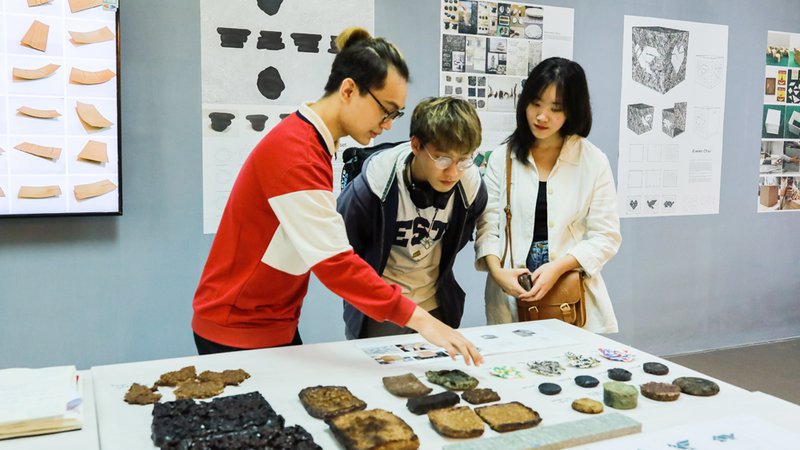
The Interior Architecture & Design Exhibition is currently taking place at London College for Design & Fashion - Hanoi.
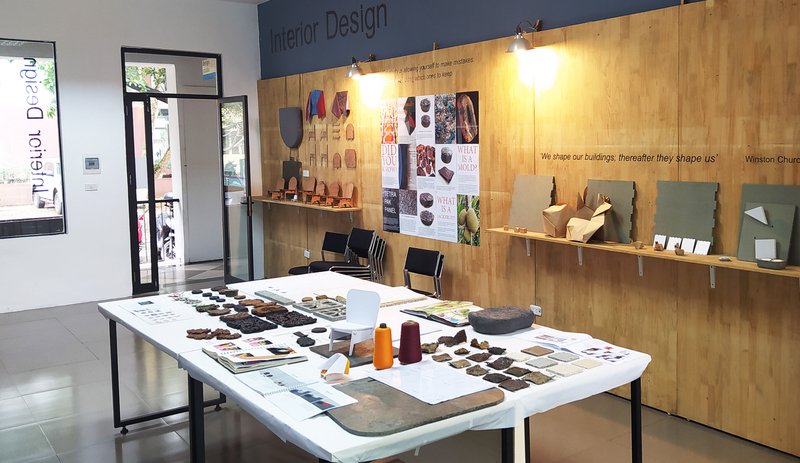
Young visitors were really surprised by how the research process presented in detail by the designers.
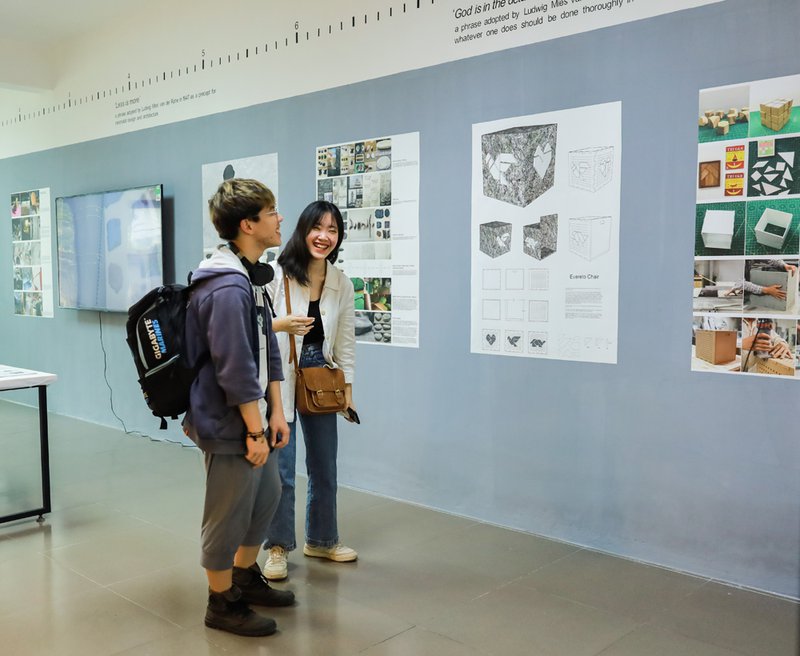
An Interior Design student - Vũ Minh Hiền shared: “To do this project, we had to conduct self-research, collecting waste from manufacturers and the surrounding area, creating plastic materials that are fully biodegradable, while also cooperating with suppliers of ready-made materials which are professionally producing new materials from waste”.
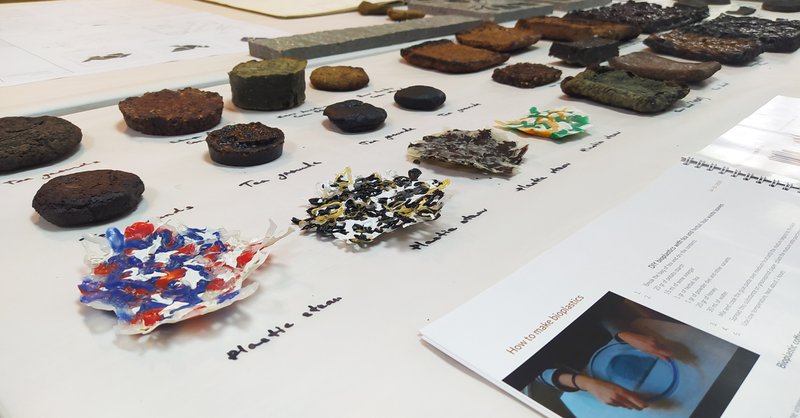
Students experimented with creating recycled materials from straws, tea grounds, coffee grounds, flowers, etc. These materials are not ready to be used yet, but this process helps the designers to experience and to learn more about potential materials instead of relying on textbooks.

Research steps to recycle plastic straws.
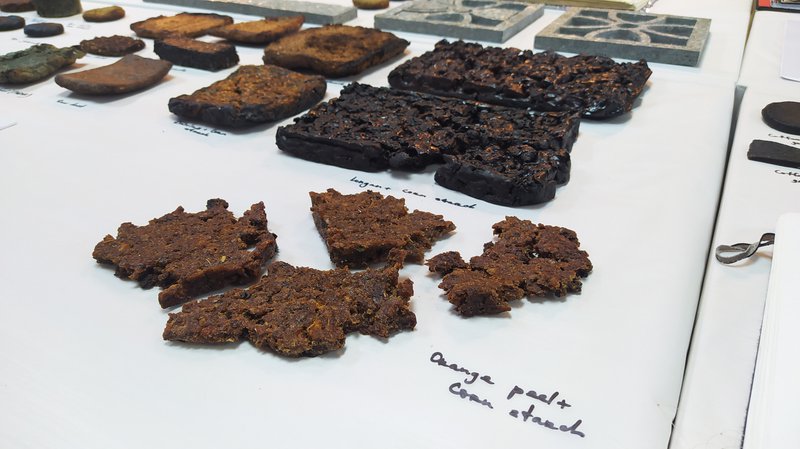
Students have used many methods such as crushing, pressing, burning, forging, baking to recycle discarded items and made them into new materials.
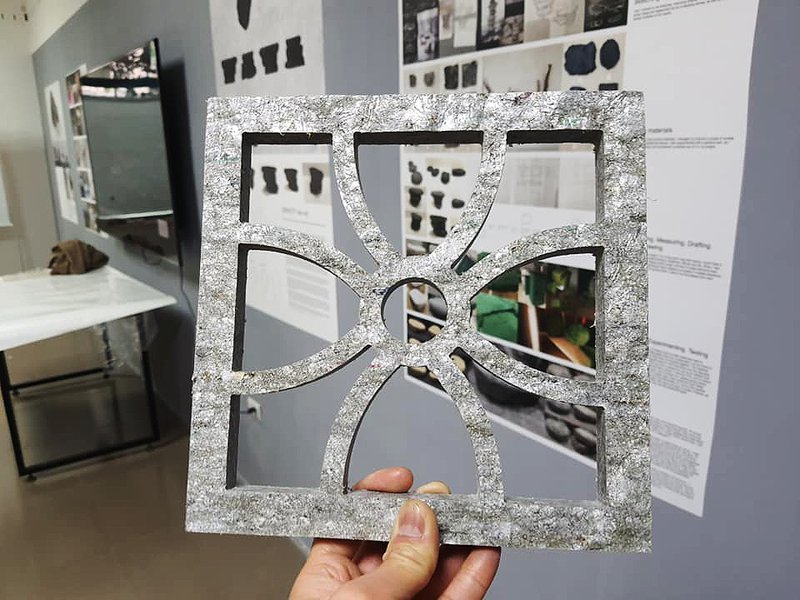
Many visitors were surprised to learn that this very concrete decorative piece was made from milk cartons, crushed and pressed.

Still using a milk carton but with the finer level of grinding will bring a different material, as heavy and strong as cement and steel. These are specimens collected by students during their research on recycled materials.
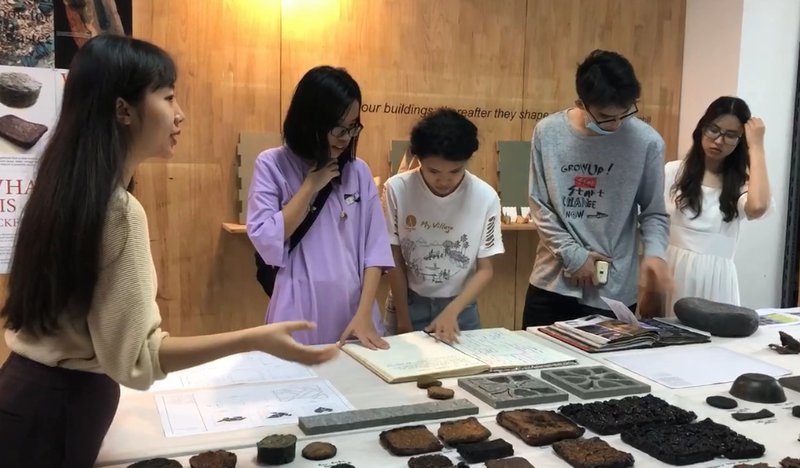
"We want to create designs that have long lifecycle. We don’t want to make recycled materials that will be thrown away or can’t be recycled after they break”- One student shared with visitors.
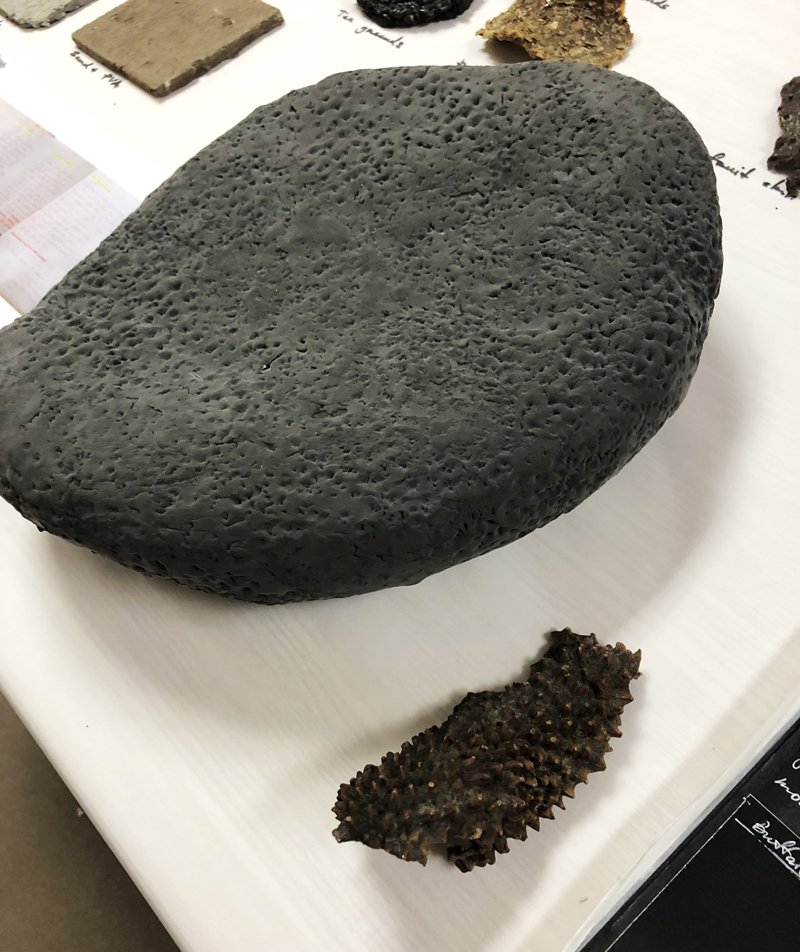
This "stone" is actually made from a jackfruit shell. The designer wants to take advantage of this material - a popular fruit in Vietnam to make small decorative chairs and tables.
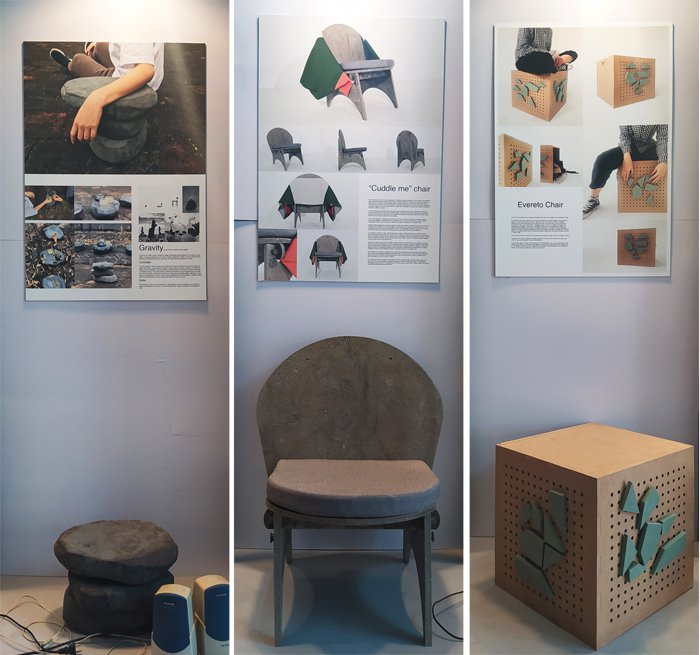
The three chairs have very different shapes but are all made from recycled materials. It is not easy to design something that can be stacked on from 3 blocks of stone that don’t even have defined shapes. Each part of the second chair is completely removable while the third chair is designed to allow more playfulness.
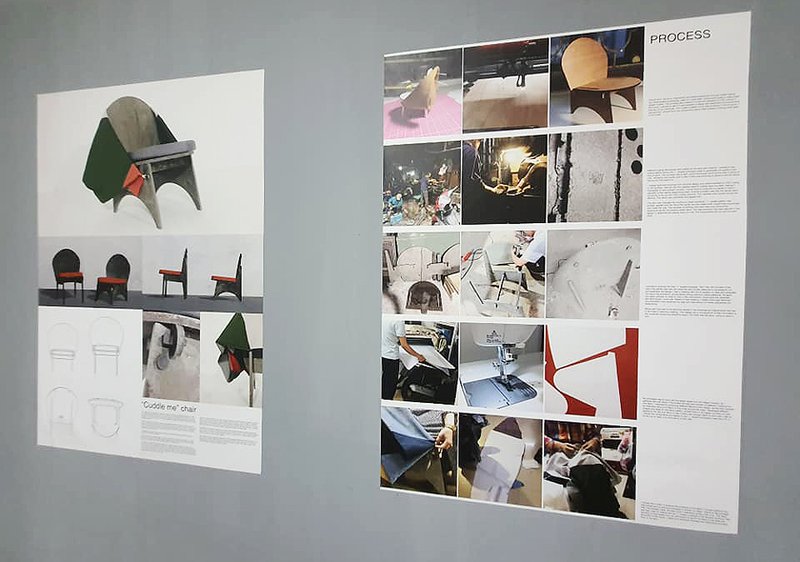
Designers share images from their research, testing and completion of the multi-purpose chair.
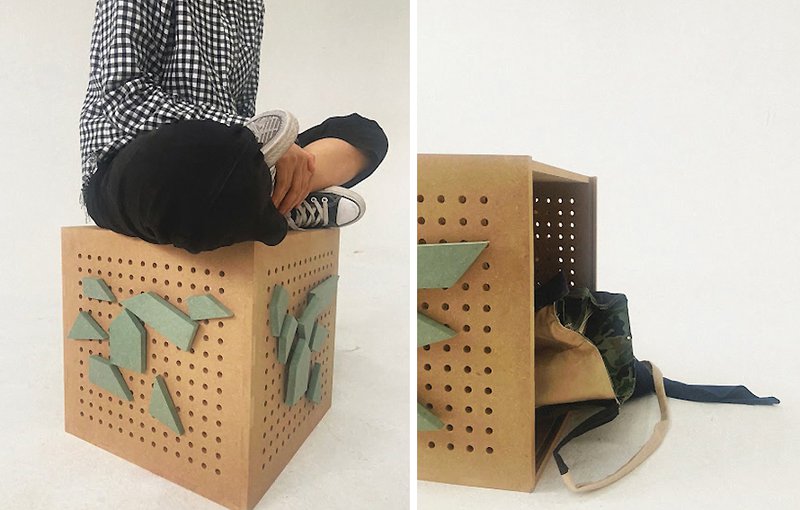
This stool was made for both playing and storing things.
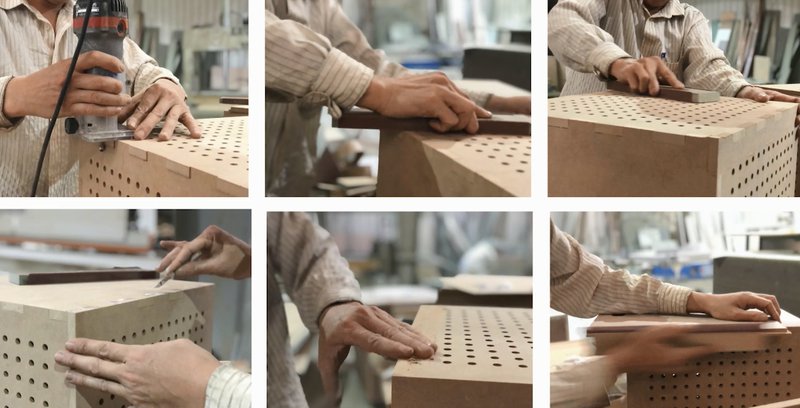
The production process was documented by the designer.

Miniature models of highly functional chairs. Attending to the sustainability criterion, each part of these chairs can be replaced to avoid throwing away the whole chair when only one part is damaged. The seat cushions were woven with the yarn of an old sweater and the chair shawl is made from old fabric taken from studios.
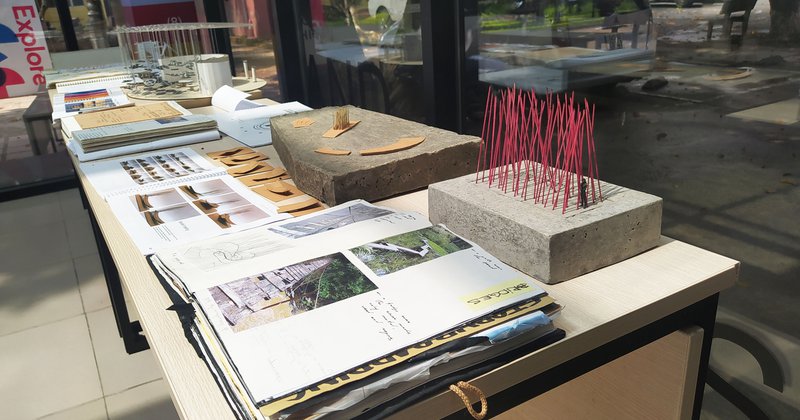
The thick, heavy sketchbooks show the visitors how detailed the students’ research are. They had to go to different places, meet people, and learn new knowledge such as space arrangement, light distribution ... to complete the exercise

Minh Hien picked the “Designing Exhibition Space for Vietnamese "To He” and created a design which turned the exhibiting space into a giant chandelier. Each To He is placed in a tray, then hanged up in the air. The wool yarn that weaves the trays together is taken from waste material of a big fashion brand.
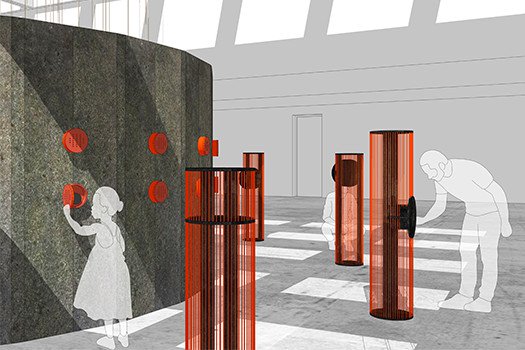
Visitors will be able to interact with the exhibit by recording their own thoughts and sharing it to others.
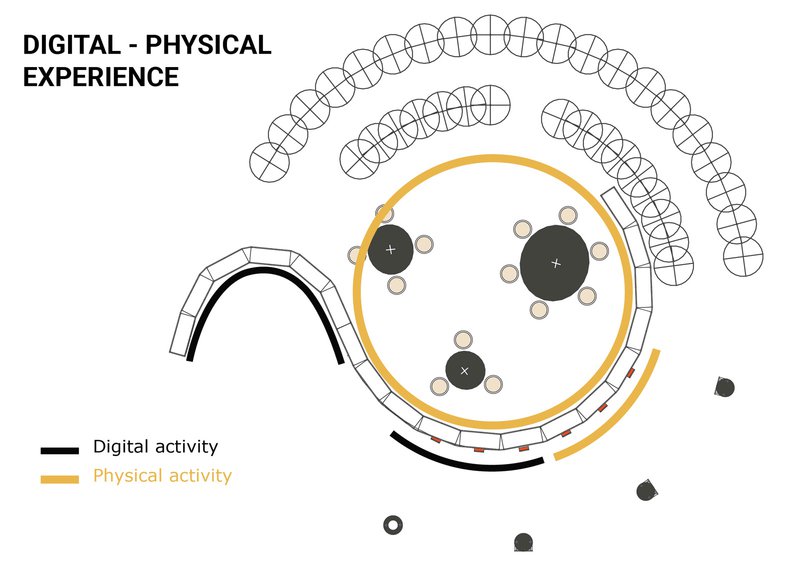
The drawing shows where the visitors can experience with the exhibition digitally and where they can engage with it physically.
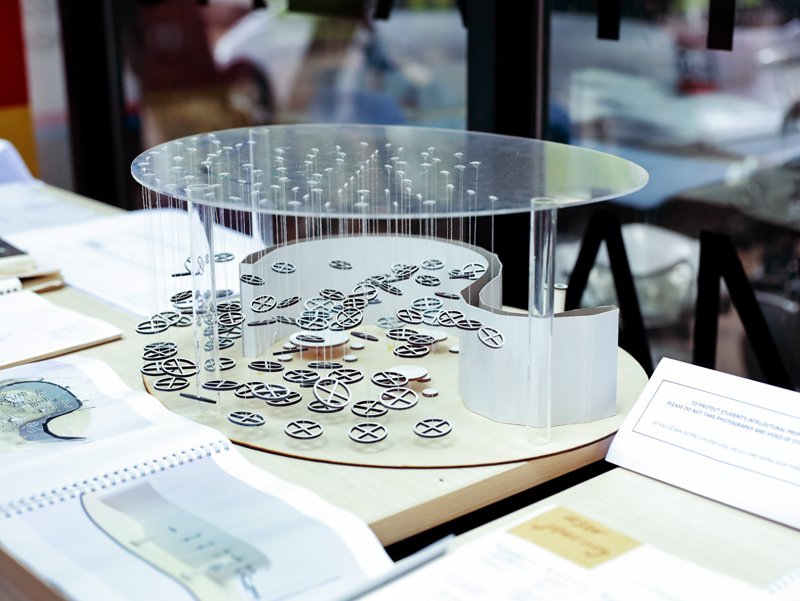
This model surprised many visitors for its creativity and meticulousness. The design students had to go through a long process of searching for ideas, doing research, performing tests, etc. which is the experience that many students of the Interior Architecture & Design at LCDF- Hanoi shared.


